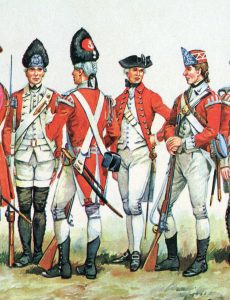The opening shots of the American Revolutionary War on 19th April 1775, that ‘echoed around the world’
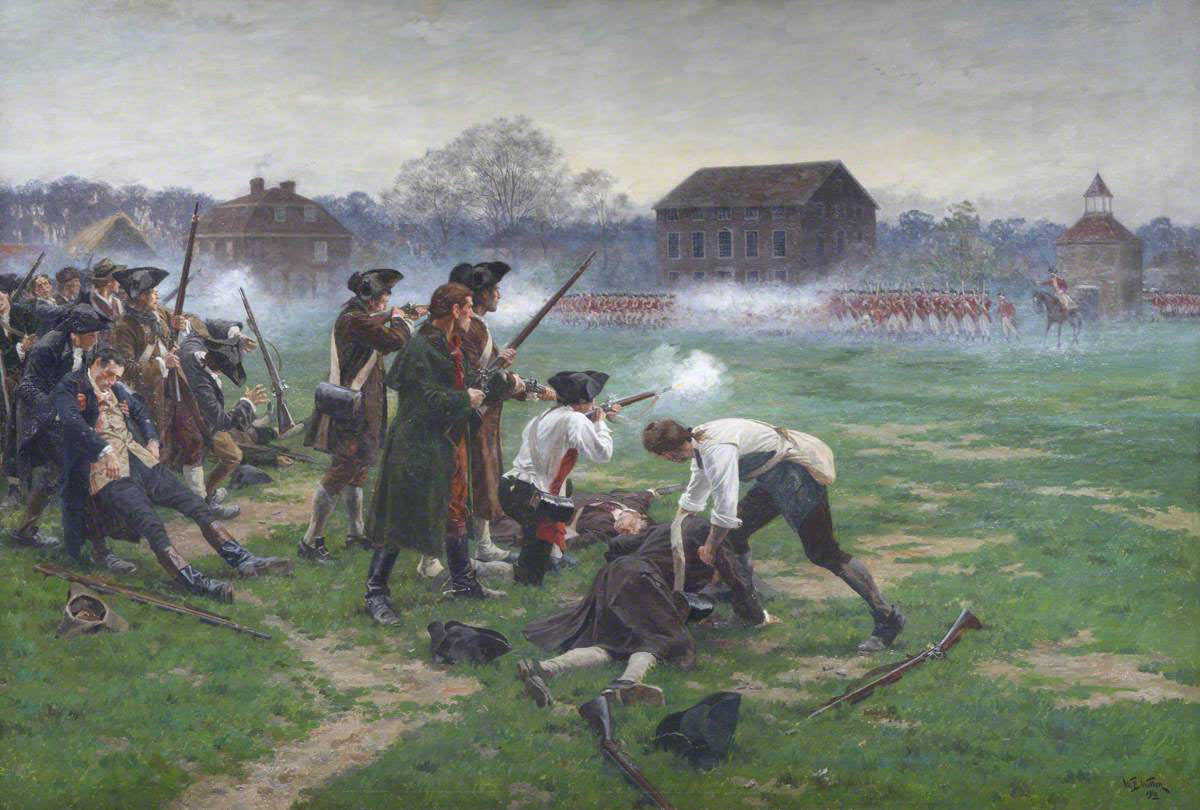
Battle on Lexington Green: Battle of Lexington and Concord 19th April 1775 American Revolutionary War: picture by William Barnes Wollen
The previous battle in the British Battles sequence is the Battle of Quebec 1759
The next battle of the American Revolutionary War is the Battle of Bunker Hill
Return to the American Revolutionary War index
Battle: Lexington and Concord
War: American Revolution
Date of the Battle of Lexington and Concord: 19th April 1775
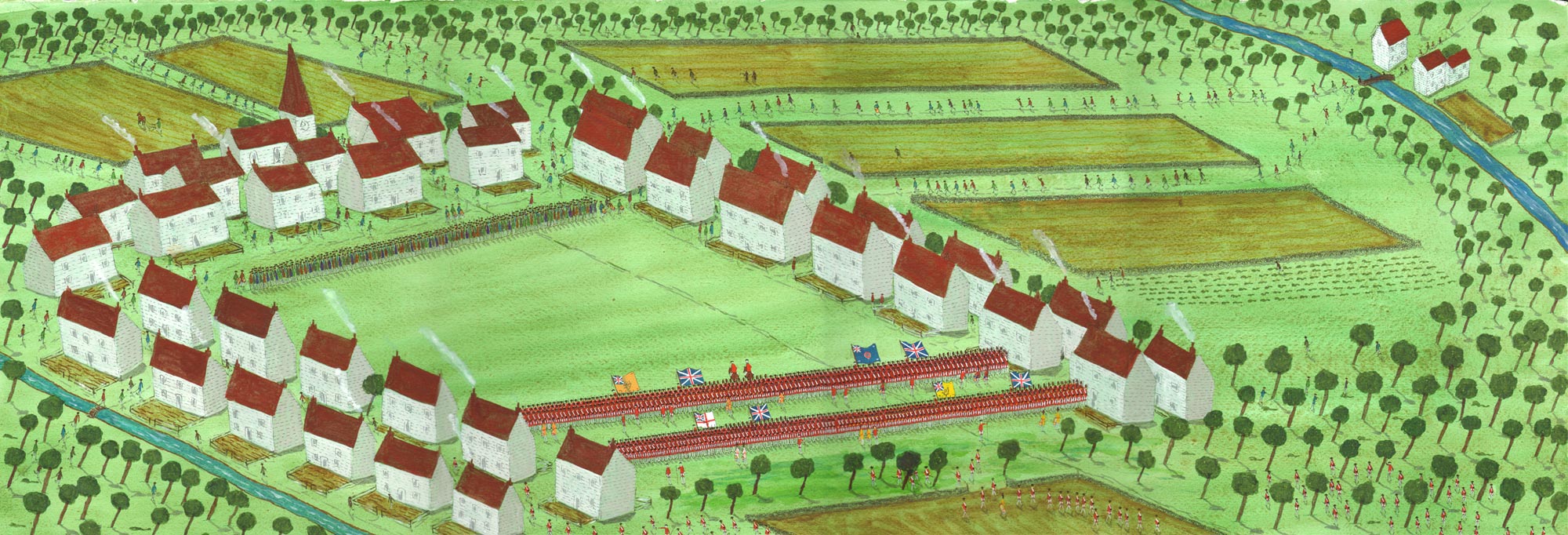
Battle on Lexington Green: Battle of Lexington and Concord 19th April 1775 American Revolutionary War: picture by John Fawkes
Place of the Battle of Lexington and Concord: Boston, Massachusetts
Combatants at the Battle of Lexington and Concord: British Troops and the Militia of Massachusetts
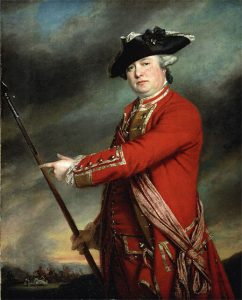
Lieutenant-Colonel Francis Smith, British commander at the Battle of Lexington and Concord 19th April 1775 American Revolutionary War: picture by Francis Cotes
Generals at the Battle of Lexington and Concord: Colonel Smith, Major Pitcairn and Lord Percy commanded the British Troops. Paul Revere and William Dawes rode to warn the villages on the route to Concord and the Congress. Militia were commanded by Barrett, Buttrick, Robinson and many others.
Size of the armies at the Battle of Lexington and Concord: 1,800 British. American numbers are unknown.
Uniforms, arms and equipment at the Battle of Lexington and Concord: The British were armed with muskets and bayonets. Some light guns were used. The American militia were armed with muskets, blunderbusses and any weapons they could find.
Winner of the Battle of Lexington and Concord: The British suffered extensive loss. The Americans considered the contest an encouraging start to the war.
British Regiments at the Battle of Lexington and Concord:
Regiments of Foot: 4th, 5th, 10th, 18th, 23rd Royal Welch Fusiliers, 38th, 43rd, 52nd, 59th and Marines.
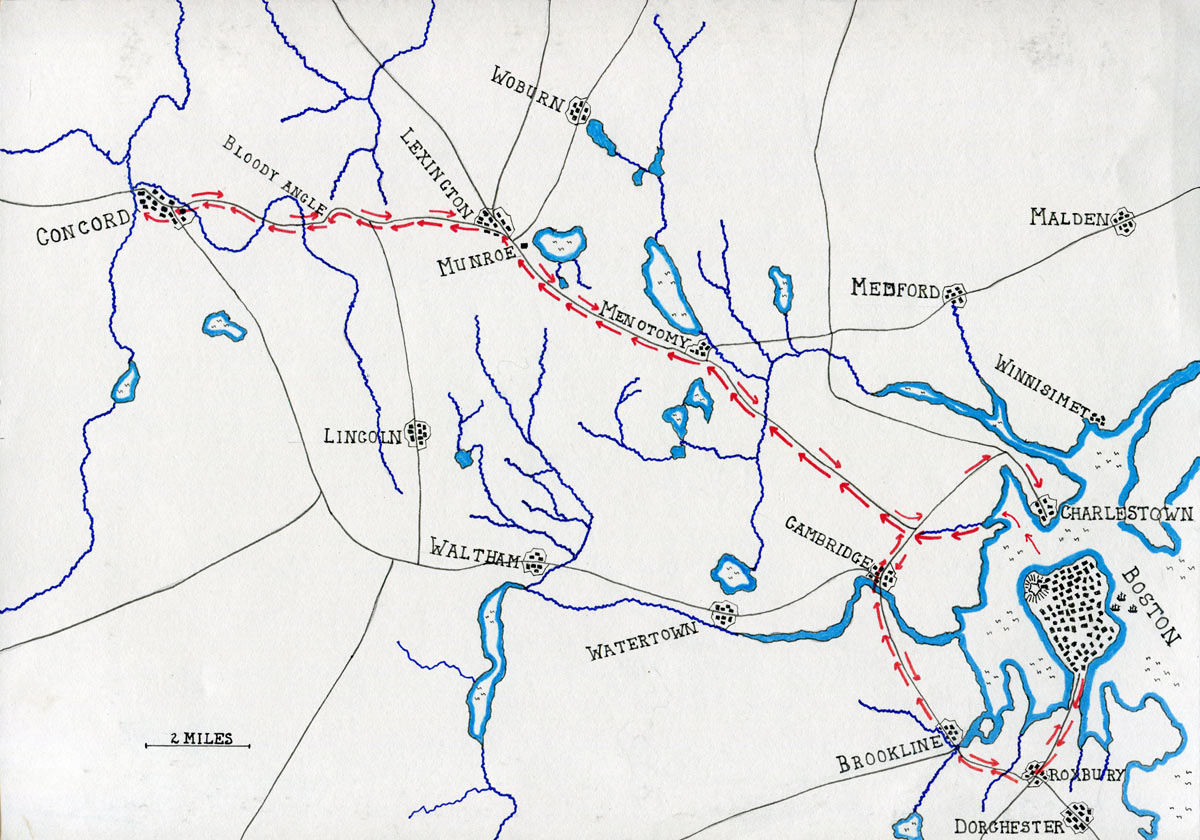
Map of the British route to Concord: Battle of Lexington and Concord 19th April 1775 American Revolutionary War: map by John Fawkes
Account of the Battle of Lexington and Concord:
This engagement was the first encounter of the Revolutionary War. General Gage commanded the British garrison in Boston. A Provincial Congress, determined on independence for the American colonies, was established in Cambridge, Massachusetts, outside Boston, and the New England militia was drilling for war.
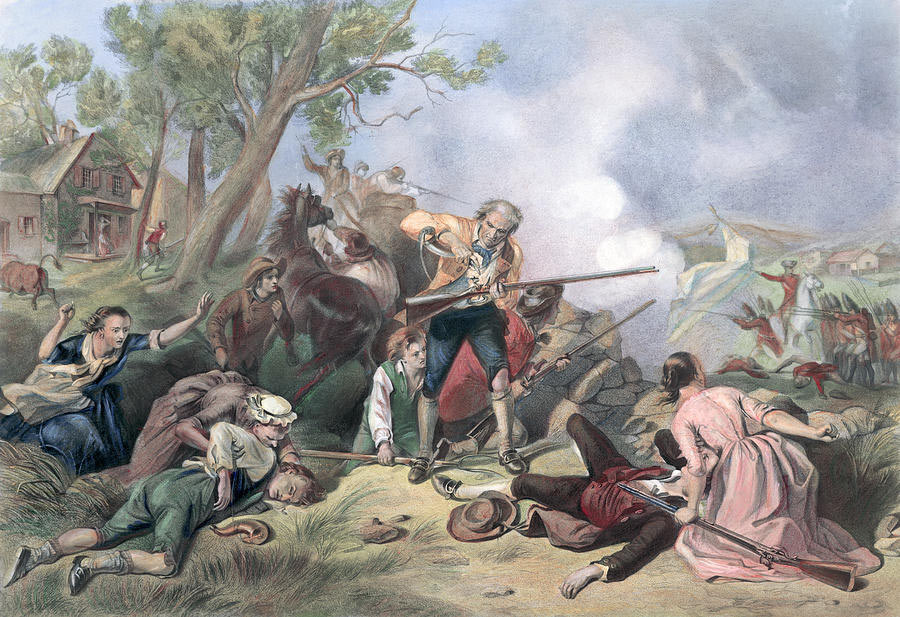
Battle of Lexington and Concord 19th April 1775 American Revolutionary War: picture by by Charles Henry Granger
Acting on orders from the British Government in London, General Gage decided to send a force to seize the weapons and ammunition held by the Congress in the armoury at Concord, some 15 miles from Boston. Lieutenant-Colonel Smith was dispatched with the grenadier and light infantry companies from each of the regiments in the garrison. Boston was sealed overnight to prevent word being passed of the departure of the force, which was rowed across the harbour late on the night of 18th April 1775 to Charles River. The troops landed and began the march, but the sound of bells ringing showed that the countryside had been alerted.
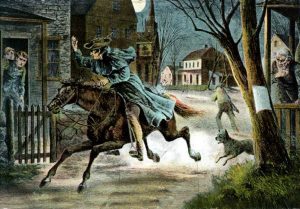
Paul Revere’s ride calling ‘The British are coming’: Battle of Lexington and Concord 19th April 1775 American Revolutionary War
Paul Revere and William Dawes escaped from Boston and rode through the villages on the route to Concord warning the inhabitants, shouting as they rode ‘The British are coming.’
Lieutenant-Colonel Smith sent, in advance of his main body, a force of light infantry under Major Pitcairn to secure the bridges at Concord. Pitcairn entered Lexington to find a body of militia drawn up on the village green. Shots were fired in which 18 Americans were hit and the militia dispersed.
The troops marched on to Concord where the British destroyed such supplies as had not been removed. In the meantime, American militia attacked a body of light Infantry on one of the bridges in Concord and drove them back.
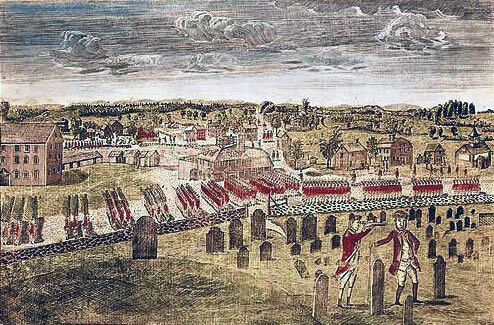
Attack on Concord: Battle of Lexington and Concord 19th April 1775 American Revolutionary War: picture by Amos Doolittle
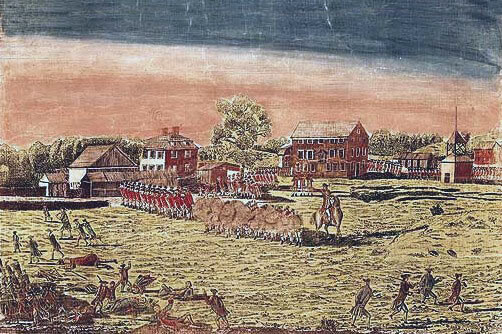
Battle on Lexington Green: Battle of Lexington and Concord 19th April 1775 American Revolutionary War: picture by Amos Doolittle
Smith’s troops then began the march back to Boston, shot at from hidden positions by American militia along the route, until they met Percy’s relieving force and the whole force withdrew into Boston. On the route British soldiers burned and looted houses of the colonials. In one or two cases colonial militia caught with weapons were summarily executed.
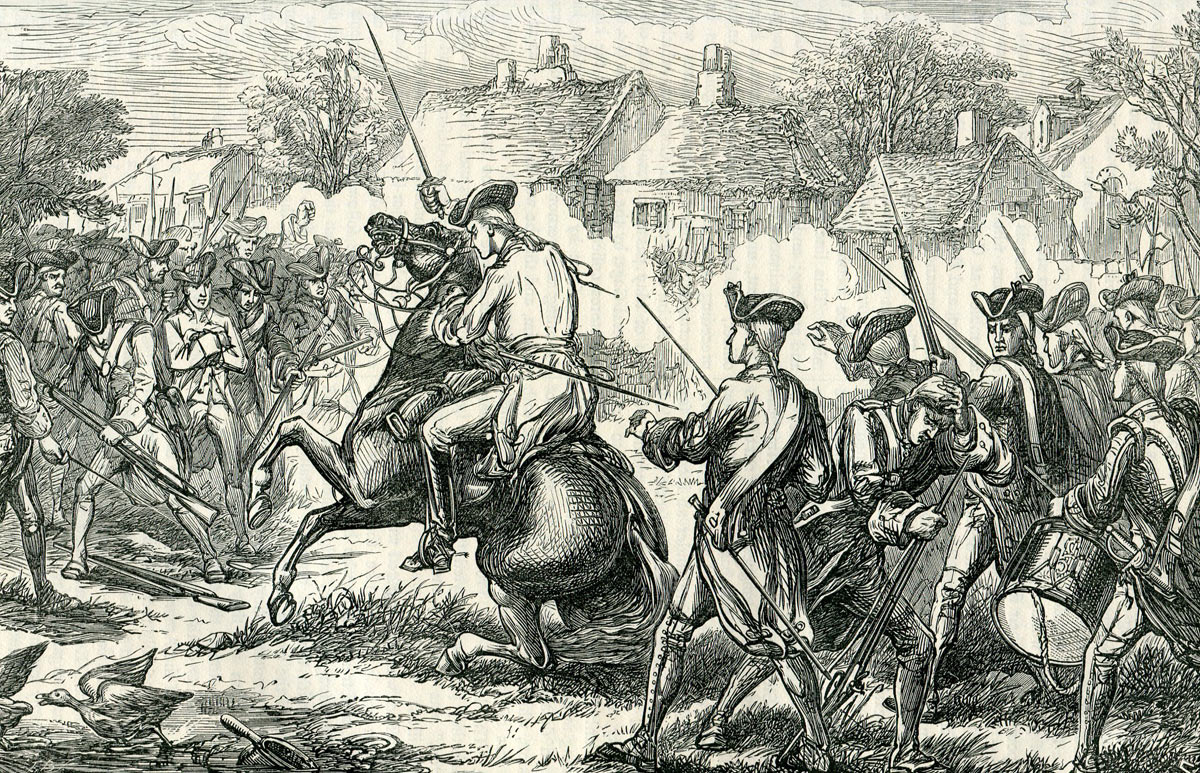
Major Pitcairn enters Lexington: Battle of Lexington and Concord 19th April 1775 American Revolutionary War
The British force was extracted through the initiative of Lord Percy, who, on finding the bridge at Cambridge blocked by the American Colonial Militia, took the British force east to Charlestown on Boston Harbour, from where they were conveyed to Boston by Royal Navy boats.
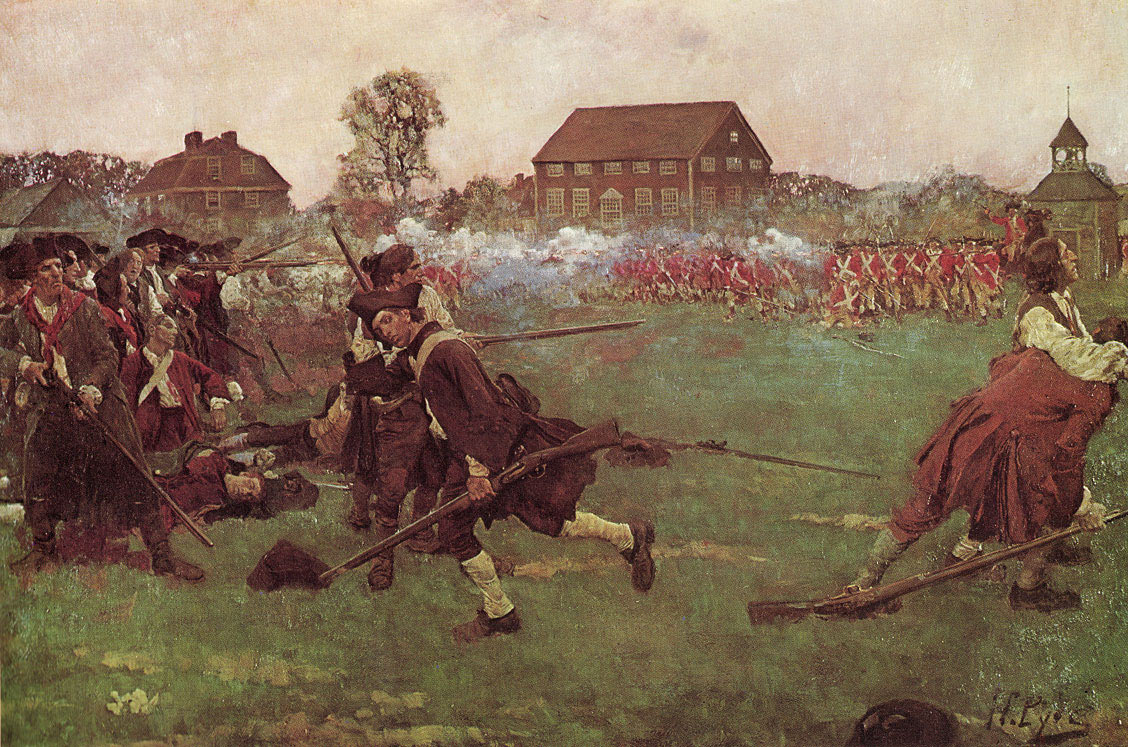
Battle on Lexington Green: Battle of Lexington and Concord 19th April 1775 American Revolutionary War
Casualties at the Battle of Lexington and Concord: The British Regiments suffered 19 officers and 250 soldiers killed and wounded. The American losses did not exceed 90 men.
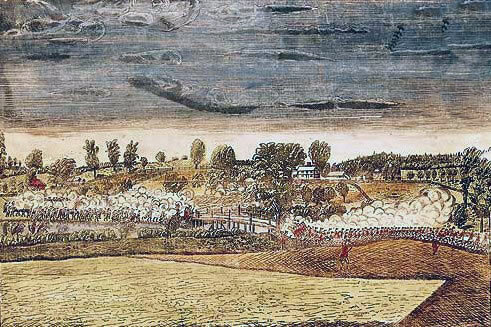
Fight on the North Bridge in Concord: Battle of Lexington and Concord 19th April 1775 American Revolutionary War: picture by Amos Doolittle
Follow-up to the Battle of Lexington and Concord: The British force achieved its aim of destroying much of the build-up of arms and ammunition at Concord, but the harrying of the troops along the route of their return march and the way they were bundled back into Boston was considered by both sides to be a reverse for the British.
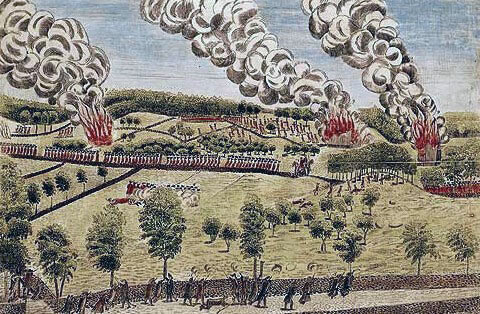
British retreat: Battle of Lexington and Concord 19th April 1775 American Revolutionary War: picture by Amos Doolittle from eyewitness accounts
This success encouraged the spirit of revolt across the American colonies and was the immediate cause of New York being seized for the revolution. A strong force of Americans moved spontaneously to Boston and invested the city, this force being eventually formed into Washington’s Continental Army.
Anecdotes and traditions from the Battle of Lexington and Concord:
- It is claimed that the fight at Lexington was begun by Major Pitcairn firing his pistols at the Americans. Major Pitcairn was fatally wounded at the Battle of Bunker Hill on 17th June 1775.
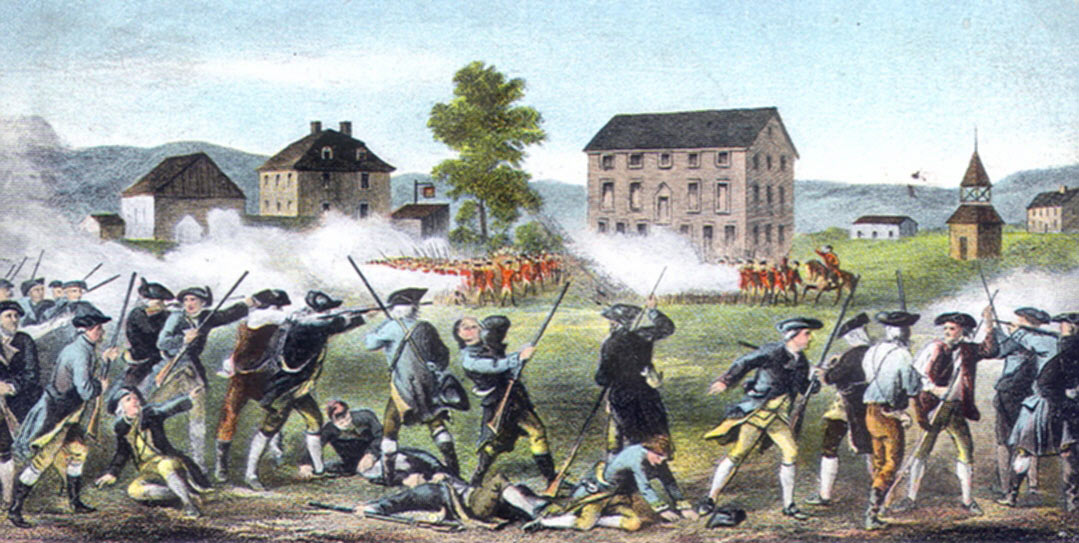
First shots on Lexington Green: Battle of Lexington and Concord 19th April 1775 American Revolutionary War
References for the Battle of Lexington and Concord:
History of the British Army by Sir John Fortescue
The War of the Revolution by Christopher Ward
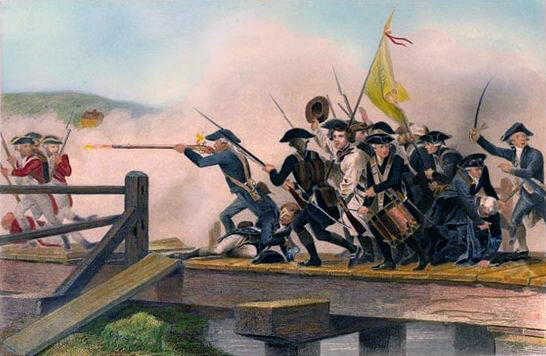
Fight for Concord Bridge: Battle of Lexington and Concord 19th April 1775 American Revolutionary War: picture by by Alonzo Chapell
The previous battle in the British Battles sequence is the Battle of Quebec 1759
The next battle of the American Revolutionary War is the Battle of Bunker Hill
